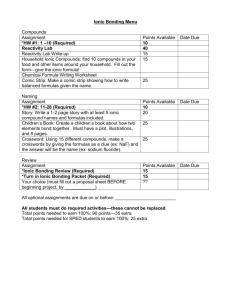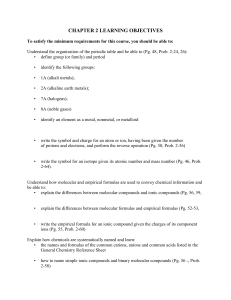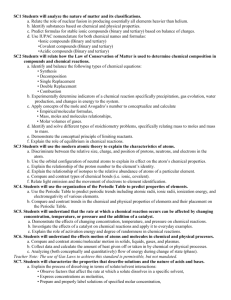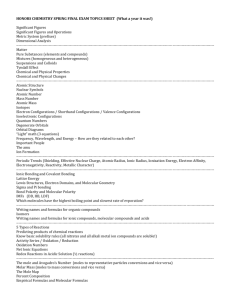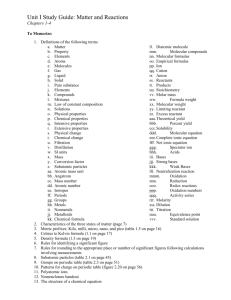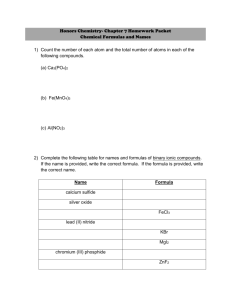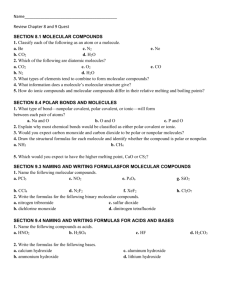moles binary
advertisement
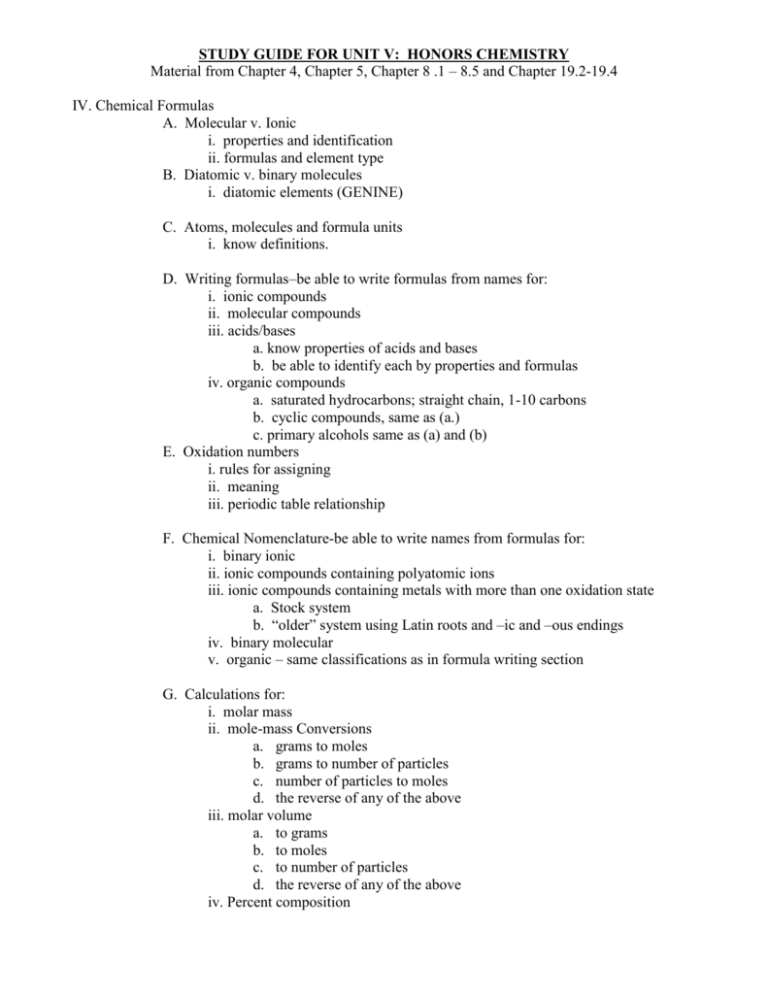
STUDY GUIDE FOR UNIT V: HONORS CHEMISTRY Material from Chapter 4, Chapter 5, Chapter 8 .1 – 8.5 and Chapter 19.2-19.4 IV. Chemical Formulas A. Molecular v. Ionic i. properties and identification ii. formulas and element type B. Diatomic v. binary molecules i. diatomic elements (GENINE) C. Atoms, molecules and formula units i. know definitions. D. Writing formulas–be able to write formulas from names for: i. ionic compounds ii. molecular compounds iii. acids/bases a. know properties of acids and bases b. be able to identify each by properties and formulas iv. organic compounds a. saturated hydrocarbons; straight chain, 1-10 carbons b. cyclic compounds, same as (a.) c. primary alcohols same as (a) and (b) E. Oxidation numbers i. rules for assigning ii. meaning iii. periodic table relationship F. Chemical Nomenclature-be able to write names from formulas for: i. binary ionic ii. ionic compounds containing polyatomic ions iii. ionic compounds containing metals with more than one oxidation state a. Stock system b. “older” system using Latin roots and –ic and –ous endings iv. binary molecular v. organic – same classifications as in formula writing section G. Calculations for: i. molar mass ii. mole-mass Conversions a. grams to moles b. grams to number of particles c. number of particles to moles d. the reverse of any of the above iii. molar volume a. to grams b. to moles c. to number of particles d. the reverse of any of the above iv. Percent composition


